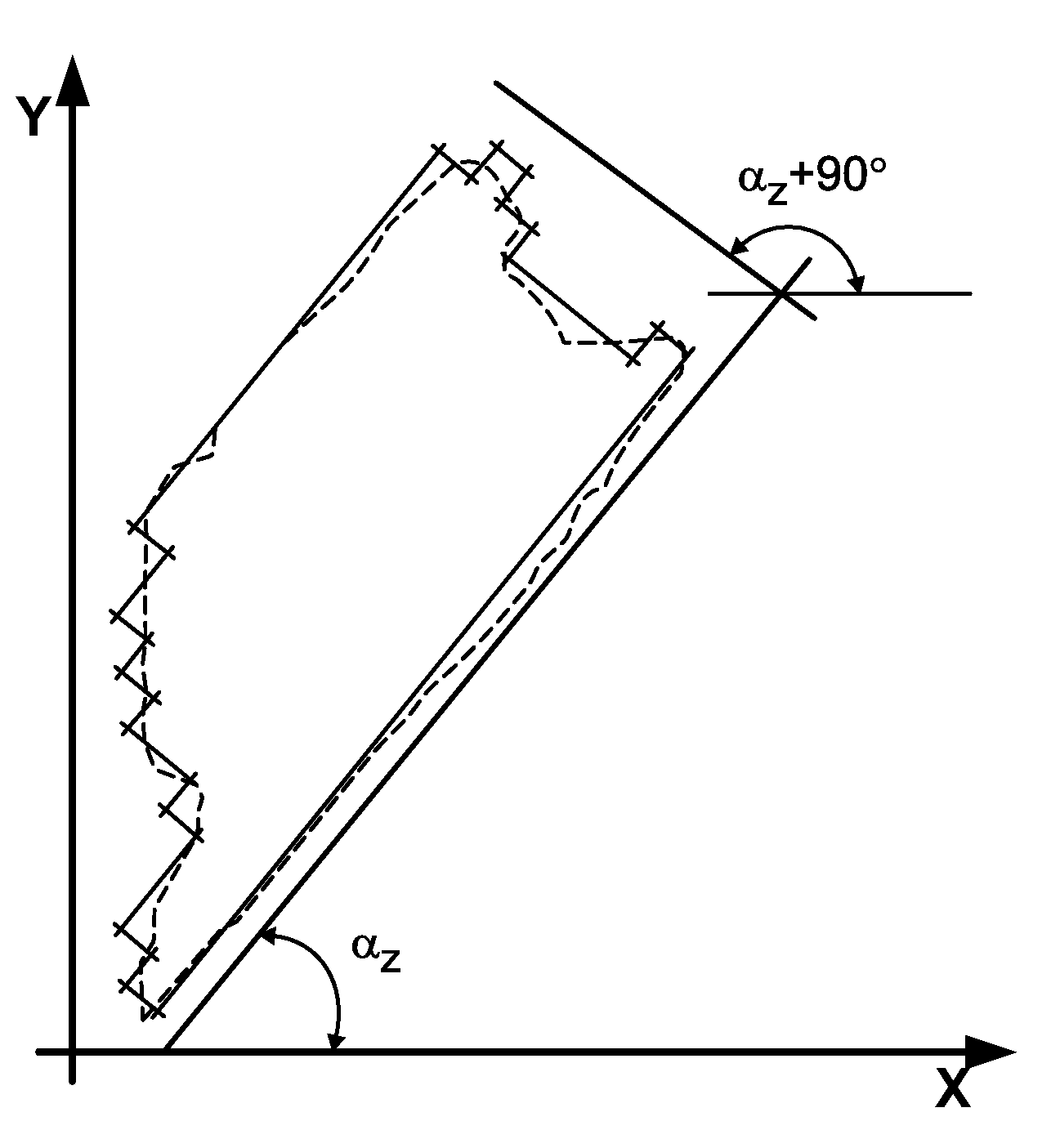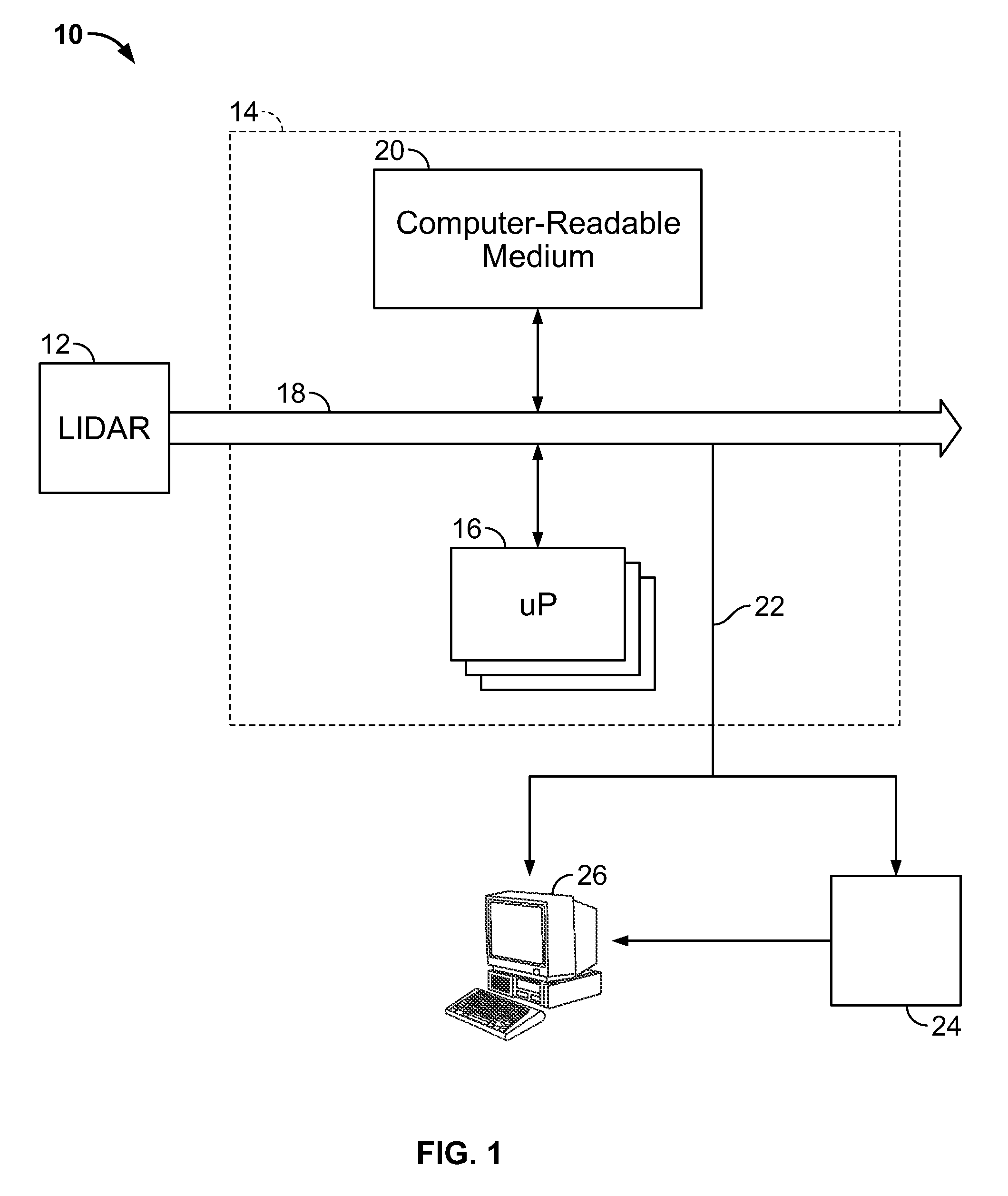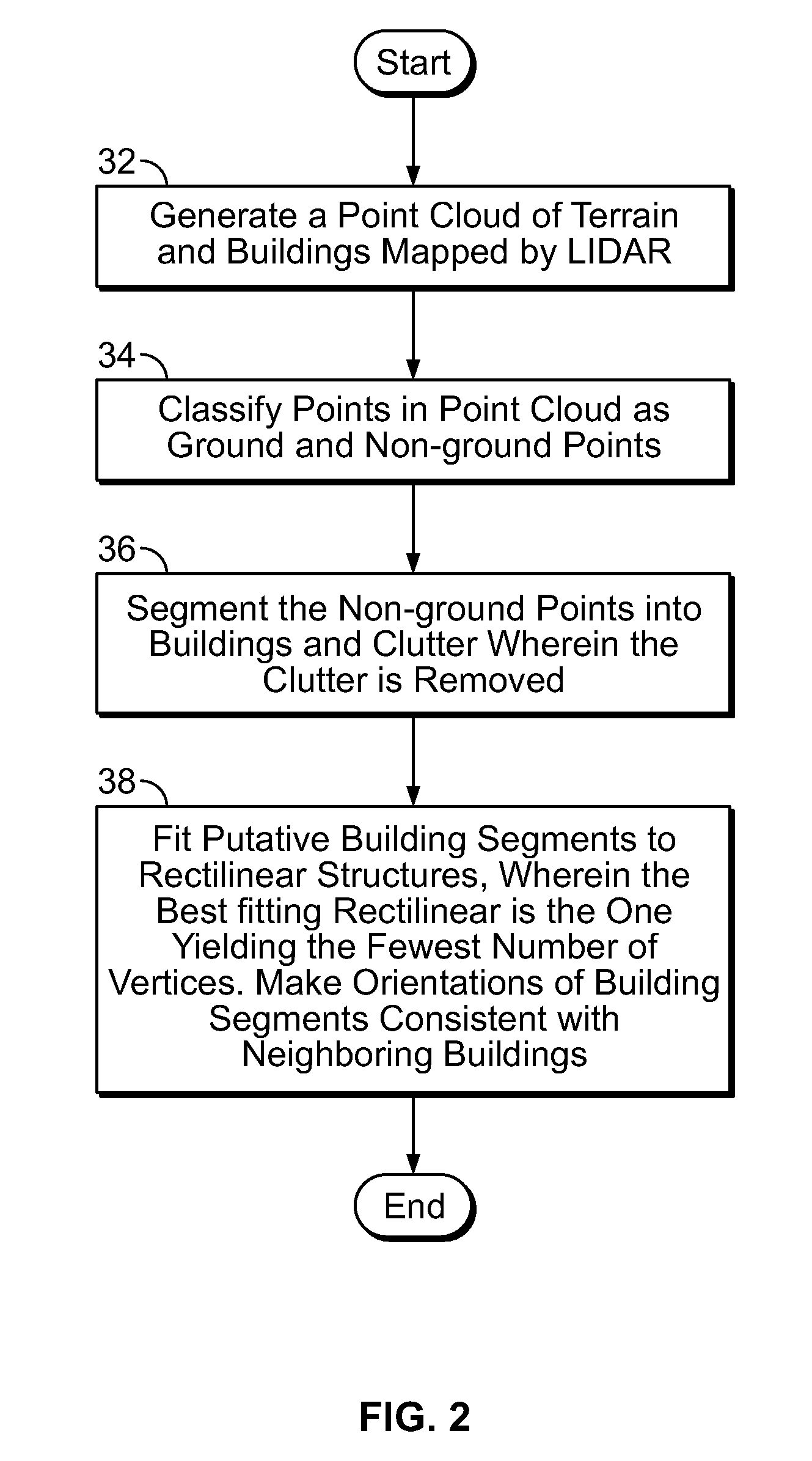Building segmentation for densely built urban regions using aerial LIDAR data
a technology of building segmentation and lidar data, applied in the field of computer vision, can solve the problems of inability to automatically extract 3d models, lack of information on the tops of buildings, and general lack of information on the sides of buildings in aerial data, etc., and achieve the effect of a higher degree of local planarity
- Summary
- Abstract
- Description
- Claims
- Application Information
AI Technical Summary
Benefits of technology
Problems solved by technology
Method used
Image
Examples
Embodiment Construction
[0021]Referring now to FIG. 1, a system for automatically extracting 3D models of dense urban regions using aerial LIDAR data is shown, generally indicated at 10. By way of a non-limiting example, the system 10 receives aerial LIDAR data from a LIDAR system 12. The system 10 can include a computing platform 14. The computing platform 14 may include a personal computer or work-station (e.g., a Pentium-M 1.8 GHz PC-104 or higher) comprising one or more single or multi-core processors 16 which includes a bus system 18 which connects the one or more processors 16 with the computer-readable medium 20. The computer readable medium 20 can also be used for storing the instructions of the system 10 to be executed by the one or more processors 16, including an operating system, such as the Windows or the Linux operating system. The one or more processors 16 generate one or more 3D terrain maps from the computer-readable medium 20, thereby functioning as a 3D map generator. The computer readab...
PUM
 Login to View More
Login to View More Abstract
Description
Claims
Application Information
 Login to View More
Login to View More - R&D
- Intellectual Property
- Life Sciences
- Materials
- Tech Scout
- Unparalleled Data Quality
- Higher Quality Content
- 60% Fewer Hallucinations
Browse by: Latest US Patents, China's latest patents, Technical Efficacy Thesaurus, Application Domain, Technology Topic, Popular Technical Reports.
© 2025 PatSnap. All rights reserved.Legal|Privacy policy|Modern Slavery Act Transparency Statement|Sitemap|About US| Contact US: help@patsnap.com



